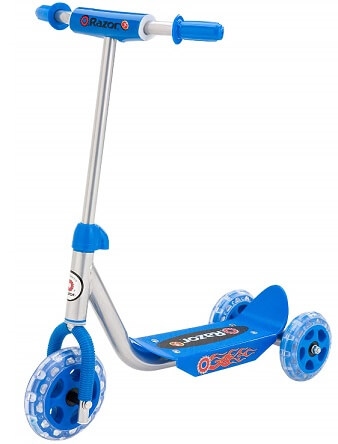Tips To Buying Scooters for Kids
Tips To Buying Scooters for Kids
Scooters are one of the most timeless means of recreation for adults and children alike. If you have kids, buying them a scooter is a great addition to their choices for outdoor activities. It encourages physical activity for children, and it enhances their motor skills even at a young age. For young children who want to learn how to ride a bike someday, a kick scooter is an ideal stepping stone in teaching them the basics of control and mobility.
Things to consider when choosing a scooter
Selecting a kick scooter for a child is not a simple activity. There are a lot of factors that you, as parents, should take into account, so that you’re able to choose well from a wide range of options of scooters in the market. Click here if you want to see a good list of scooters for kids by Dronethusiast. More importantly, here are some tips to help you choose a kick scooter for your little one:

1. Consider your child’s age and level of skill.
Although riding a kick scooter may seem like a simple task for most, you have to keep in mind that this may be the first vehicle that your child will experience taking control of. Generally speaking, kids aged two to three years may already have the necessary skills to ride a scooter. It should, however, be emphasized that age alone will not determine one’s readiness to use a scooter.
You may assess your child’s readiness by observing his or her physical capabilities when moving around the house. If your child can walk with a straight gait and can run confidently, they may be able to handle a scooter comfortably. As the parent or guardian, you should evaluate in advance how mobile and agile your child is before you decide if your little one is ready to use a scooter safely.
When you do purchase the scooter, it’s wise to slowly teach your child how to use it by starting out indoors and then slowly building up your child’s confidence to start using it outdoors.
2. Study the various styles of scooters in the market.
There are a few types of scooters in the market, each with its own advantages and disadvantages. It will all depend on the skill level of the user and other lifestyle factors such as portability, weight, and your intended use for it (i.e., whether you’ll use the scooter indoors or outdoors).
The main categories of kick scooters are the two-wheeled variant and the three-wheeled variant. Each variant has its own sub-categories, even more so for the three-wheeled scooters. Here are a few examples:
? The two front and one rear wheel type has the lean-to-steer function. This type of scooter is one of the most beginner-friendly types, as it takes away the need for the user to actively balance the scooter. It actually balances on its own.
Also, instead of having conventional steering wherein the user turns the handlebar in the direction of the turn, this type of scooter has what is called a tilt-steer mechanism. This means that the user just leans towards the direction they want to go, and the wheels will follow.
? The opposite of the first type is the one front and two rear wheel type, which has conventional steering. This type of scooter has the conventional handlebar steering that you see on bikes, which can teach the user how to actively take control of the vehicle without having to balance the scooter.
? For two-wheeled scooters, this is the variant for more skilled riders, preferably for kids with a few years’ experience in riding three-wheelers. It has conventional handlebar steering, and would have to be maintained at a speed fast enough for it to maintain balance.
3. Check out the size of the scooter.
Scooters have size categories both for the wheels and the actual deck. A lot of these factors affect performance and usability. Generally speaking, scooters have small, medium, and large wheels. The size affects how nimble and easy to control the scooter will be. Smaller scooters are usually more nimble and easier to ride, while scooters with bigger wheels can handle rougher terrain and heavier loads.
4. Inspect the features before you make a final choice.
Deck size is an indicator of the scooter’s weight capacity, as it dictates the size of the feet that the scooter can accommodate. In addition, brakes are commonly seen on scooters, and it greatly increases the safety of the scooter, especially for faster models. These brakes are operated by stepping on the top of the rear wheels, which, in turn, provides friction on the wheel.
Assess the portability of the scooter model. Some models can be folded for ease of transport when you want to bring it with you to family trips. Moreover, check for the scooter’s adjustability. There are models that have adjustable features to suit your growing child. One such feature is the adjustable height handlebars, which will enable your child to continue using their scooter as they grow taller by the year.

Conclusion
Ideally, you should purchase a scooter that’s affordable or one that you may be able to use for many years to come even if the initial cost is more expensive. Check as well that the scooter is adjustable. If not, make sure at least that the scooter is sturdy enough for other kids to use it once your child has outgrown it.
Author: Casey Wilson

Casey is a technology enthusiast who enjoys tinkering with gadgets. His latest love is with Drones and other types of technology related devices. When he’s not tinkering, he’s working at his other job at a local computer and gadget store.
(29)


